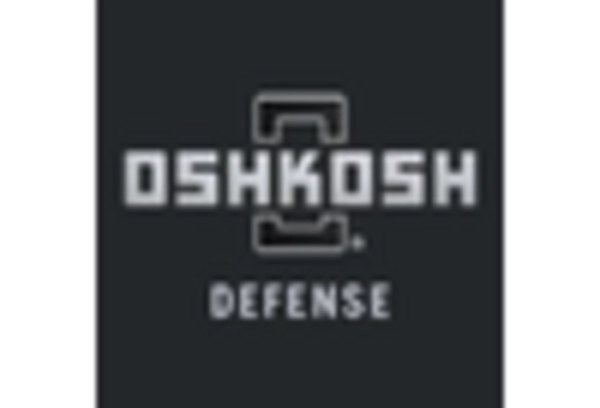Rising Geopolitical Tensions
The current geopolitical landscape appears to be increasingly volatile, which may drive demand for advanced military capabilities. The infantry fighting-vehicle market could see heightened interest as nations prioritize defense readiness. In the US, military budgets have been adjusted to reflect these tensions, with an estimated increase of 5% in defense allocations for 2025. This shift suggests a potential surge in procurement of infantry fighting vehicles, as they are essential for modern warfare. The need for enhanced mobility and protection in conflict zones may further stimulate investments in this sector. As nations respond to perceived threats, the infantry fighting-vehicle market is likely to benefit from these strategic shifts.
Modernization of Armed Forces
The ongoing modernization initiatives within the US armed forces are likely to significantly impact the infantry fighting-vehicle market. The military's focus on upgrading existing fleets and integrating new technologies suggests a robust demand for advanced vehicles. Reports indicate that the US Department of Defense plans to allocate approximately $10 billion for modernization projects in 2025, which includes infantry fighting vehicles. This investment reflects a commitment to enhancing operational capabilities and ensuring that forces remain competitive. As the infantry fighting-vehicle market adapts to these modernization efforts, manufacturers may need to innovate to meet the evolving requirements of the military.
Increased Emphasis on Joint Operations
The trend towards joint operations among military branches is becoming more pronounced, which may influence the infantry fighting-vehicle market. The US military is increasingly focusing on interoperability between different service branches, necessitating vehicles that can operate seamlessly in diverse environments. This shift could lead to a demand for infantry fighting vehicles that are versatile and adaptable. The infantry fighting-vehicle market may see growth as manufacturers develop platforms that support joint operations, potentially increasing sales by 7% in the coming years. This emphasis on collaboration suggests a strategic direction that could reshape procurement priorities.
Technological Integration and Innovation
The integration of cutting-edge technologies into military vehicles is a driving force in the infantry fighting-vehicle market. Innovations such as artificial intelligence, advanced sensors, and enhanced communication systems are becoming essential for modern combat scenarios. The US military's investment in research and development is projected to reach $15 billion in 2025, with a significant portion allocated to vehicle technology. This focus on technological advancement indicates a potential transformation in the infantry fighting-vehicle market, as manufacturers strive to incorporate these innovations into their offerings. The demand for smarter, more capable vehicles is likely to reshape the competitive landscape.
Focus on Soldier Protection and Survivability
The increasing emphasis on soldier protection and survivability is a critical driver for the infantry fighting-vehicle market. As threats evolve, the need for vehicles that provide enhanced armor and safety features is paramount. The US military has recognized this need, with a projected increase of 6% in funding for protective technologies in 2025. This focus on safeguarding personnel suggests a growing market for infantry fighting vehicles designed with advanced protective capabilities. The infantry fighting-vehicle market may experience growth as manufacturers respond to these requirements, potentially leading to innovations that prioritize crew safety in combat situations.

















Leave a Comment